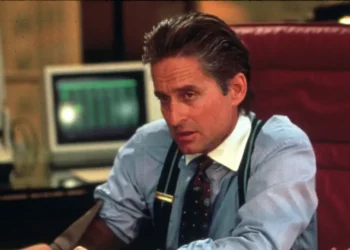
It’s hard to see how the government shutdown and reopening is anything other than a defeat for the Democrats — a high-stakes confrontation that ended with their own goals unmet and their message muddled. If they didn’t have the leverage or were not willing to use it to prolong the shutdown, then why did they stage it at all?
It’s hard to see how the government shutdown and reopening is anything other than a defeat for the Democrats — a high-stakes confrontation that ended with their own goals unmet and their message muddled. If they didn’t have the leverage or were not willing to use it to prolong the shutdown, then why did they stage it at all?
The shutdown reinforced the image of the Democrats as feckless. They promise wonderful-sounding new programs — free child care, for example — but in fact preside over bloated bureaucracies and inept execution. If America has an affordability crisis, it tends to be in places Democrats govern, like New York, Illinois and California, which all feature high taxes, soaring housing costs and stagnant outcomes in basic areas like education and infrastructure.
Consider New York City, the country’s largest and most important metropolis. Zohran Mamdani, the mayor-elect, wants more money to spend on shiny new programs. But surely it would first be worth asking what happened to the money already raised? In 2012, toward the end of Mike Bloomberg’s mayoralty, the city’s budget was about $65 billion. Today it’s about $116 billion — an increase of more than 75 percent in just over a decade. City-funded spending grew more than four times the pace of inflation from 2012 to 2019. During that period, the city’s population barely grew. Spending has soared while the subway deteriorates, housing costs rise and public schools remain mediocre despite spending more than $36,000 per pupil last year — the highest in the nation among major school systems. The result is a paradox that defines much of blue-state America: government that promises more, costs more and delivers less.
New York State mirrors the city. Its spending has risen from roughly $70 billion in 2000 to more than $230 billion today — about twice Florida’s, even though Florida has several million more residents. Illinois ranks among the top in public education spending, about $22,000 per K-12 student, yet is middling in fourth grade reading and math scores. When voters see that record, they conclude — not unreasonably — that more money is not the answer. Yet Democrats’ instinctive response to every problem remains the same: spend more.
The truth is that local government in the U.S. is already living on borrowed time. For decades, states and cities have traded short-term political harmony for long-term fiscal ruin. To keep the peace with powerful public sector unions, they promise ever-more-lavish pensions and benefits, then quietly defer the bill to future taxpayers. Across America, these obligations act like slow-motion fiscal time bombs — invisible for now, but guaranteed to explode.
Meanwhile, daily governance suffers. In too many Democratic strongholds, regulation has metastasized into paralysis. Housing is unaffordable because local zoning codes, environmental reviews, rent control and union carve-outs make construction painfully slow and expensive. California has spent $24 billion on homelessness over five years, yet the problem has only worsened. More is spent per mile on subway construction in New York than in any other city on earth. Each new initiative layers another bureaucracy atop the last.
Nothing captures urban America’s normalized dysfunction more vividly than the miles of rusting scaffolding that hang over New York City’s sidewalks. They transform public spaces into dim, dirty tunnels that harbor crime and drive away commerce. No other major city looks like this — not London, not Paris, not Rome — though all have buildings that are centuries older. Since 1980, the city has enacted a series of safety laws that have spawned an industry of contractors and consultants. Every mayor vows reform; none succeeds. Eric Adams tried with little success. Mamdani says he’ll try too, but his plan is a complicated mélange of expedited reviews and new rules — the quintessential Democratic response: process without progress.
And it is precisely this instinct — endless process instead of results — that drives voters to tolerate President Donald Trump’s bluster and bullying. “At least he gets things done,” they say. Against that image of crude efficiency, Democrats too often appear like dithering technocrats.
Americans do not hate government; they hate government that doesn’t work. They will support ambitious programs if they believe they will be implemented competently — as they did with the New Deal and the interstate highways. But when government seems incapable of building housing, fixing schools or balancing budgets, even sympathetic voters lose faith.
If Democrats want to rebuild that faith, they must rediscover the lost art of competence. And they can prove it to the entire nation by governing well in the places — big cities — where they’re in charge. Fix the schools before promising new subsidies. Change housing rules before asking for rent freezes. And tear down the scaffolding.
American liberalism once stood for a confident creed — that smart policy, executed by capable hands, could make people’s lives better. Americans want that but they watch Democrats in action and ask, like Casey Stengel more than 60 years ago about the hapless New York Mets, “Can’t anyone here play this game?”
The post Why Democrats keep flailing
appeared first on Washington Post.




